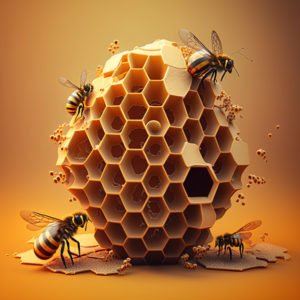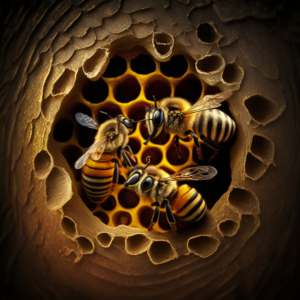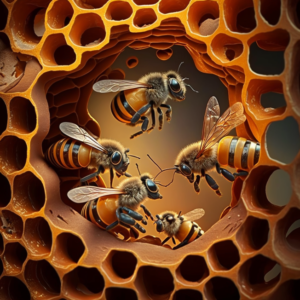Honeybees play a crucial role in pollinating crops and sustaining biodiversity. However, bee populations worldwide are facing a significant threat due to a phenomenon called colony collapse disorder (CCD).
CCD can lead to the abandonment of beehives by worker bees, resulting in the collapse of the entire colony. This has far-reaching implications for agriculture and ecosystems. To combat CCD and prevent beehive abandonment, researchers are turning to machine learning as a powerful tool to gain insights into bee behavior and hive conditions.

Understanding Bee Behavior
Before we see the role of machine learning, it’s essential to understand the factors that contribute to beehive abandonment. Bee behavior is influenced by various factors, including temperature, humidity, hive conditions, disease, and the availability of food sources.
Bees use complex communication mechanisms, such as waggle dances, to convey information about the location of food and the quality of their habitat. Machine learning can help us analyze these intricate behaviors and their relationship with hive abandonment.
Data Collection and Sensors
The first step in applying machine learning to prevent beehive abandonment is collecting relevant data. This involves installing sensors in beehives to monitor various environmental factors, such as temperature, humidity, sound, and bee movements. Modern sensors can provide a wealth of data that can be used to create predictive models.

Predictive Modeling
Machine learning algorithms can process the data collected from beehive sensors to build predictive models. These models can analyze historical data to identify patterns and correlations between environmental conditions and hive abandonment events.
By continuously monitoring the beehive environment, machine learning models can predict when conditions are becoming unfavorable and might lead to colony abandonment.
Early Warning Systems
One of the most valuable applications of machine learning in beekeeping is the development of early warning systems. These systems can alert beekeepers to potential issues well before they become critical.
For example, if the model detects a sudden drop in hive temperature or an increase in the number of bees leaving the hive without returning (a sign of foraging difficulties), it can send real-time notifications to beekeepers. This allows beekeepers to take preventive measures promptly.

Disease Detection
Machine learning can also be used to detect diseases that can lead to hive abandonment. By analyzing data from sensors that monitor bee health and behavior, machine learning models can identify unusual patterns associated with disease outbreaks.
This early detection can enable beekeepers to quarantine affected hives and implement disease management strategies.
Precision Beekeeping
Machine learning can empower beekeepers with data-driven insights to practice precision beekeeping.
By providing recommendations based on the analysis of hive conditions and bee behavior, beekeepers can optimize hive management practices, such as feeding schedules, hive maintenance, and hive splitting, to reduce the risk of colony abandonment.
Conclusion
The application of machine learning in beekeeping has the potential to revolutionize the way we monitor and manage beehives. By leveraging the power of predictive modeling, early warning systems, disease detection, and precision beekeeping, we can significantly reduce the risk of beehive abandonment and contribute to the preservation of these essential pollinators.
As bee populations continue to face threats, it’s imperative that we embrace innovative technologies like machine learning to protect these vital insects and the ecosystems they support.
